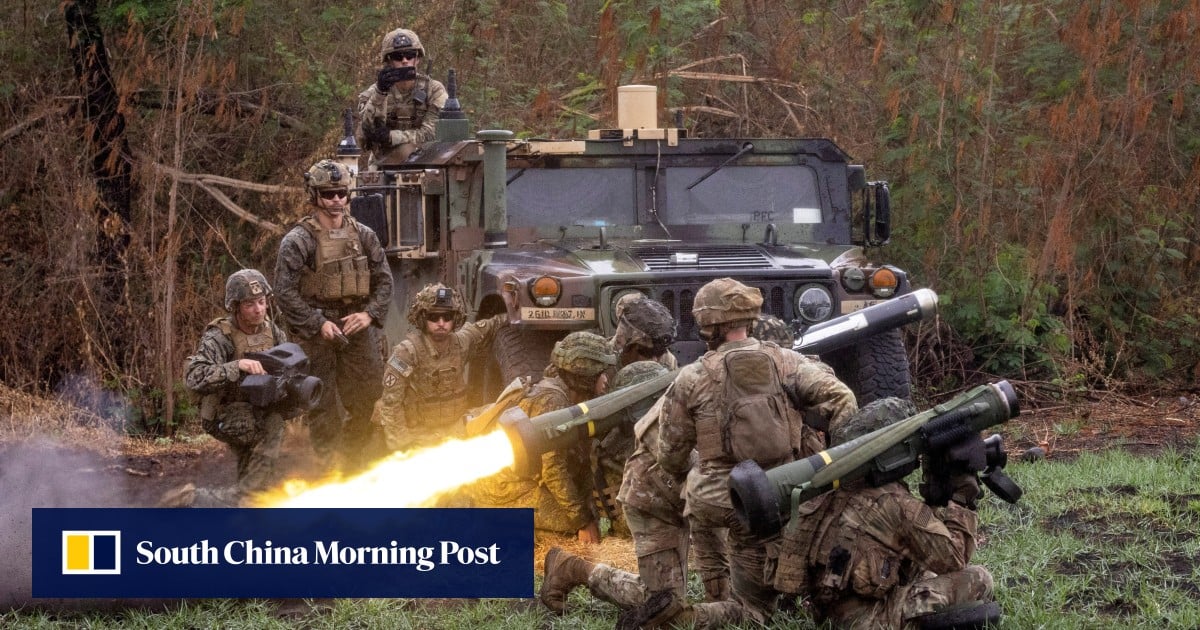While the sinking of a decommissioned made-in-China navy tanker will be a highlight of the massive Balikatan multilateral maritime exercises, it is not meant to send a message to any particular country, the Philippine military has said.
This year’s edition of the annual exercises will be conducted from April 22 until May 8 and may include up to 17,000 participants, mainly from the armed services of the United States, the Philippines, Australia and France.
The decision to use the BRP Lake Caliraya – the Philippine Navy’s only Chinese-made naval asset – as the target for a sinking exercise was “not intentional”, said Army Colonel Michael Logico, the executive agent and spokesman for Balikatan 2024. The sinking exercise will be undertaken by warships from the navies of the various participants in the northern Philippines.
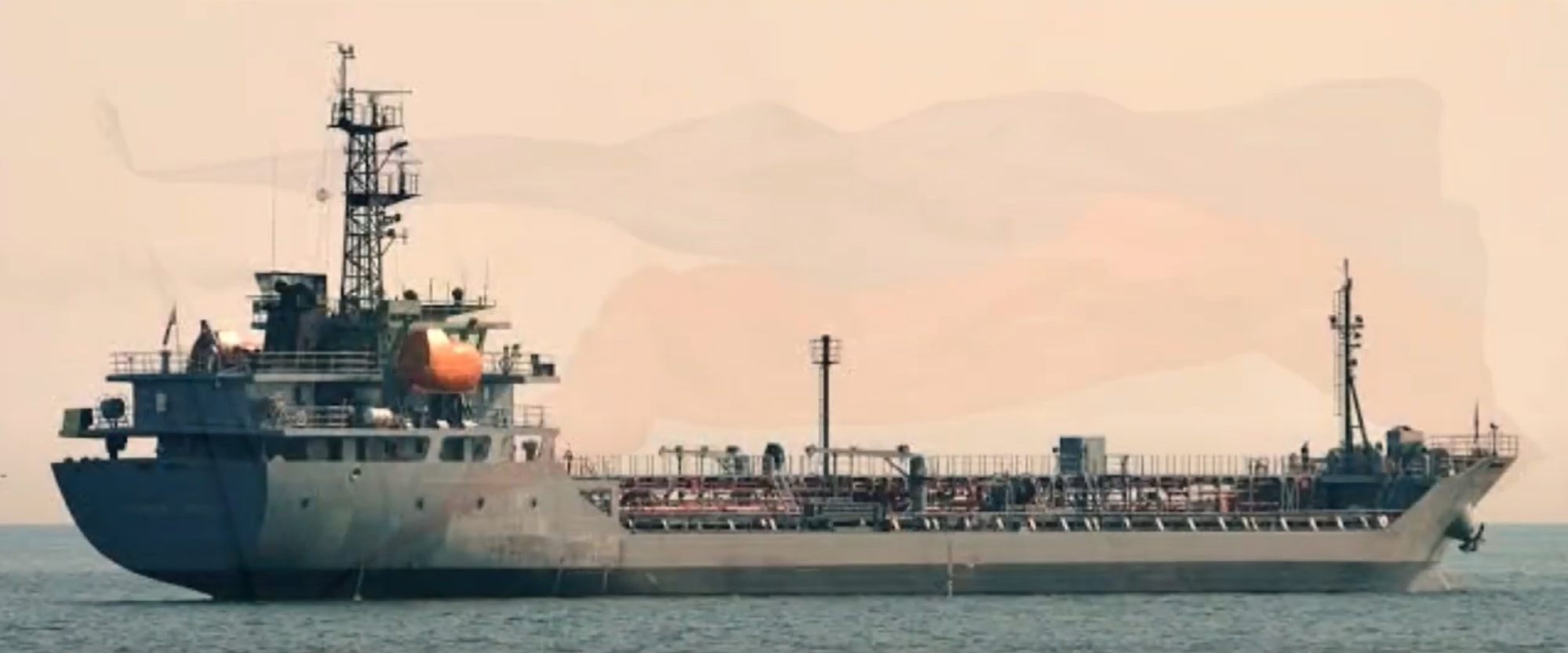
In a briefing with the Foreign Correspondents Association of the Philippines on Wednesday, Logico said this year’s Balikatan – a Tagalog term for “shoulder to shoulder” – would feature several firsts.
At least 16,000 participants will train together this year, including 11,000 soldiers from the US and 5,000 from the Armed Forces of the Philippines (AFP), while the rest will come from the French navy and the Australian Defence Force. The figure is expected to top last year’s number of 16,000 service members, who were mainly from the US military and the AFP.
Fourteen other countries, including those from Asean, the European Union and Japan, would send “observers”, Logico said. Participants from other government agencies such as the Department of Foreign Affairs and the Department of Information and Communications Technology were also invited.
Logico said this year’s exercise would test the interoperability of the AFP’s service commands with foreign forces and, for the first time, allow them to “showcase the comprehensive archipelagic defence concept” that was recently announced by Defence Secretary Gilbert Teodoro.
The concept would pivot the AFP from internal to external defence, or from fighting a local insurgency to battling a foreign enemy, Teodoro had said.
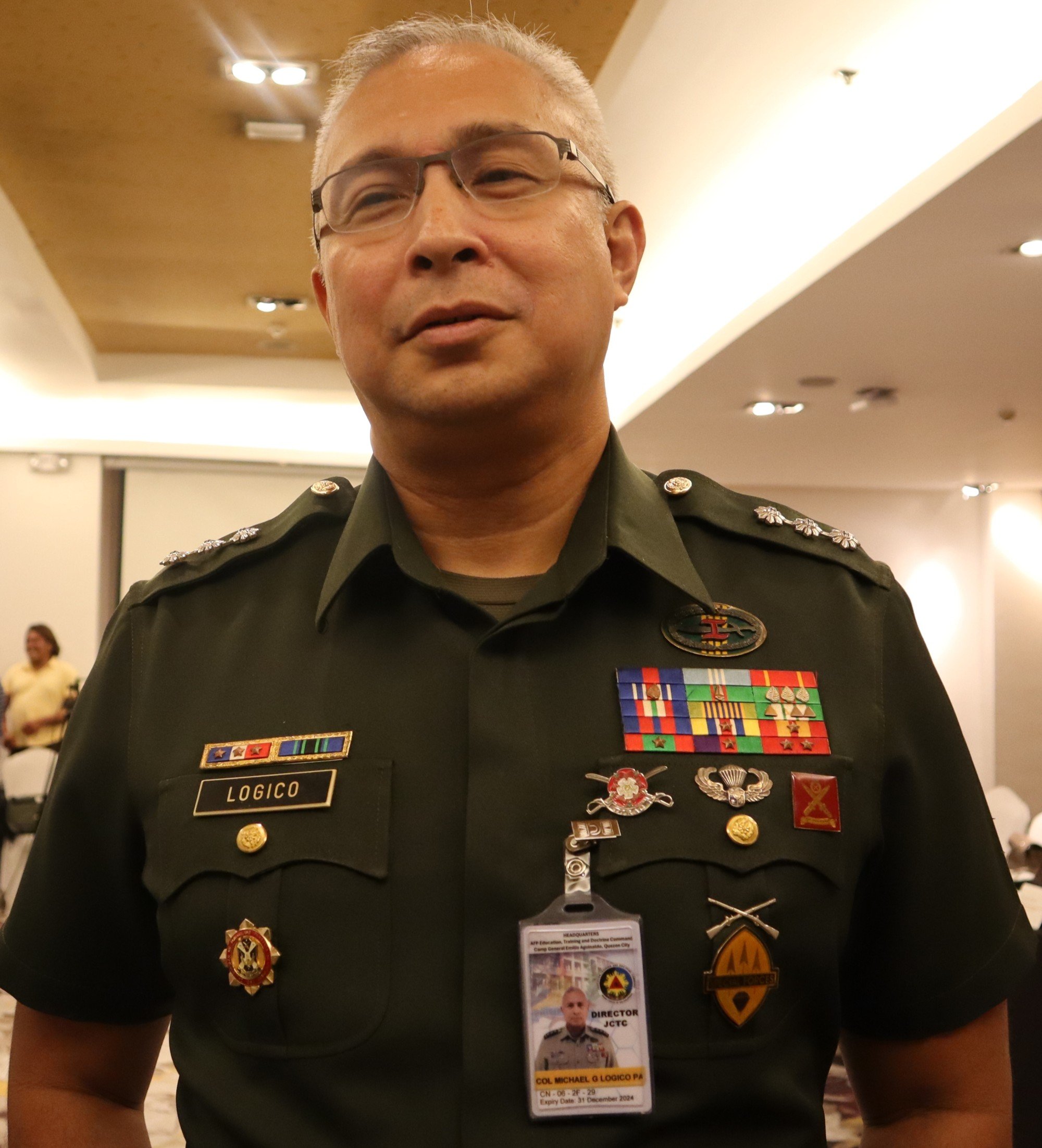
Besides the sinking of a vessel, another Balikatan highlight is a logistics exercise that involves testing the feasibility of transporting the US Navy’s SM-6 missile system by air.
Logico said the three-missiles-in-one system was “normally fired from a destroyer” but the US found a way to make it a land-based missile using a “prototype launcher”.
He stressed that the SM-6, which has a 300-nautical mile range, would not be fired at all during Balikatan. “We are testing the feasibility of bringing this weapon system by air and offloading [it] into a secure and established space.”
When asked by This Week in Asia whether the SM-6 would be located in range of the Second Thomas Shoal – a contested maritime landmark in the South China Sea that is 105 nautical miles from Palawan province – Logico said it would be located in northern Philippines, far from Palawan.
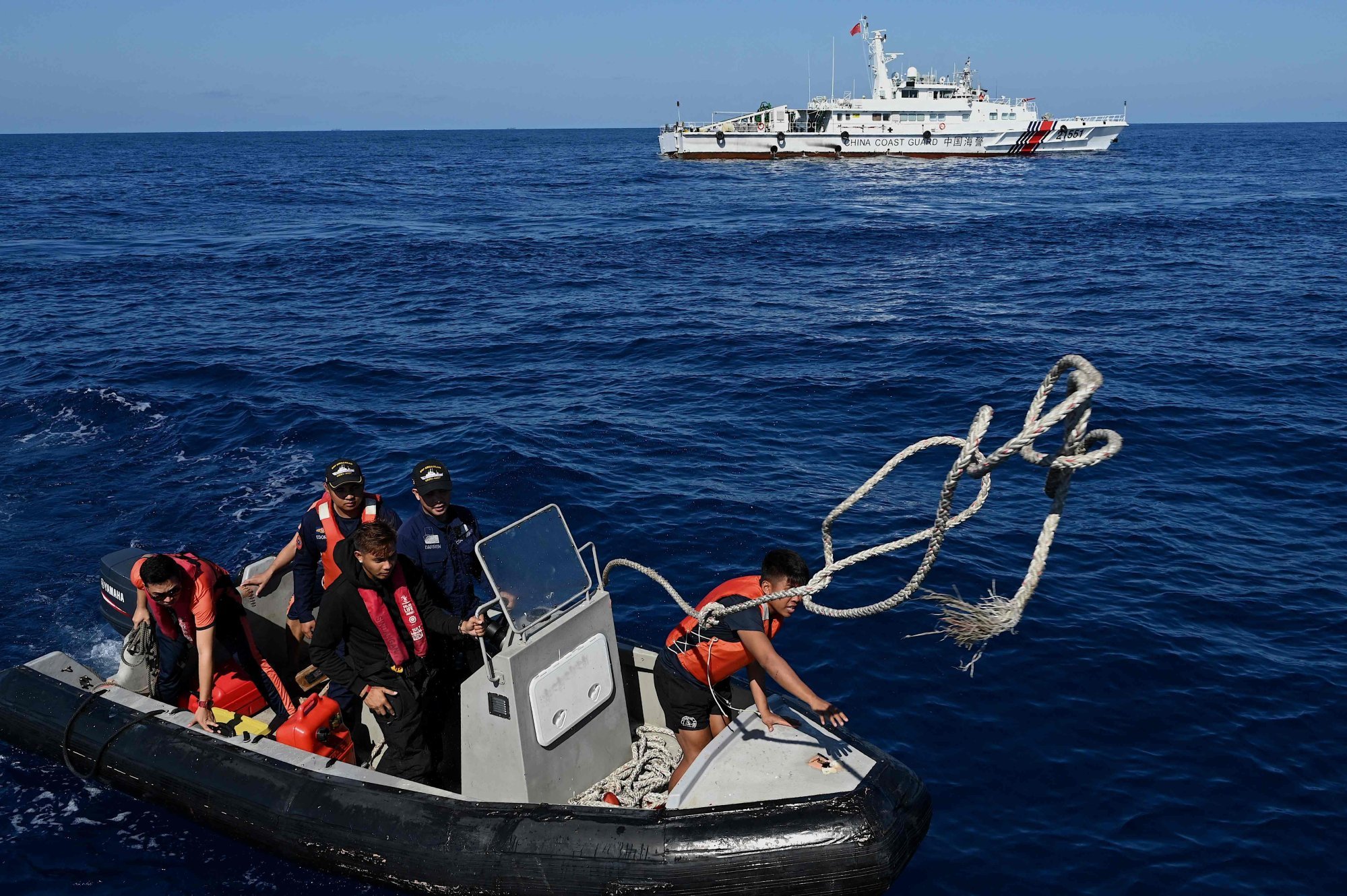
Elements of the Philippine Coast Guard (PCG) will also join the Balikatan for the first time this year. Logico said they would “secure our exercise areas, particularly during the maritime strike exercise” to make sure “there will be no interlopers … who are entering the training area, for their safety of course”.
The PCG has been at the forefront of guarding resupply ships to Manila’s military outpost on the Second Thomas Shoal – where a World War II era navy vessel, the BRP Sierra Madre, was intentionally grounded to strengthen Manila’s territorial claims on the surrounding waters – and has consequently had several run-ins with Chinese coastguard forces that have attempted to disrupt those missions.
Its participation was “absolutely not” militarising the coastguard, Logico said, adding that the maritime exercises involving the PCG assumed a situation which had evolved from normal day-to-day operations into “armed conflict”.
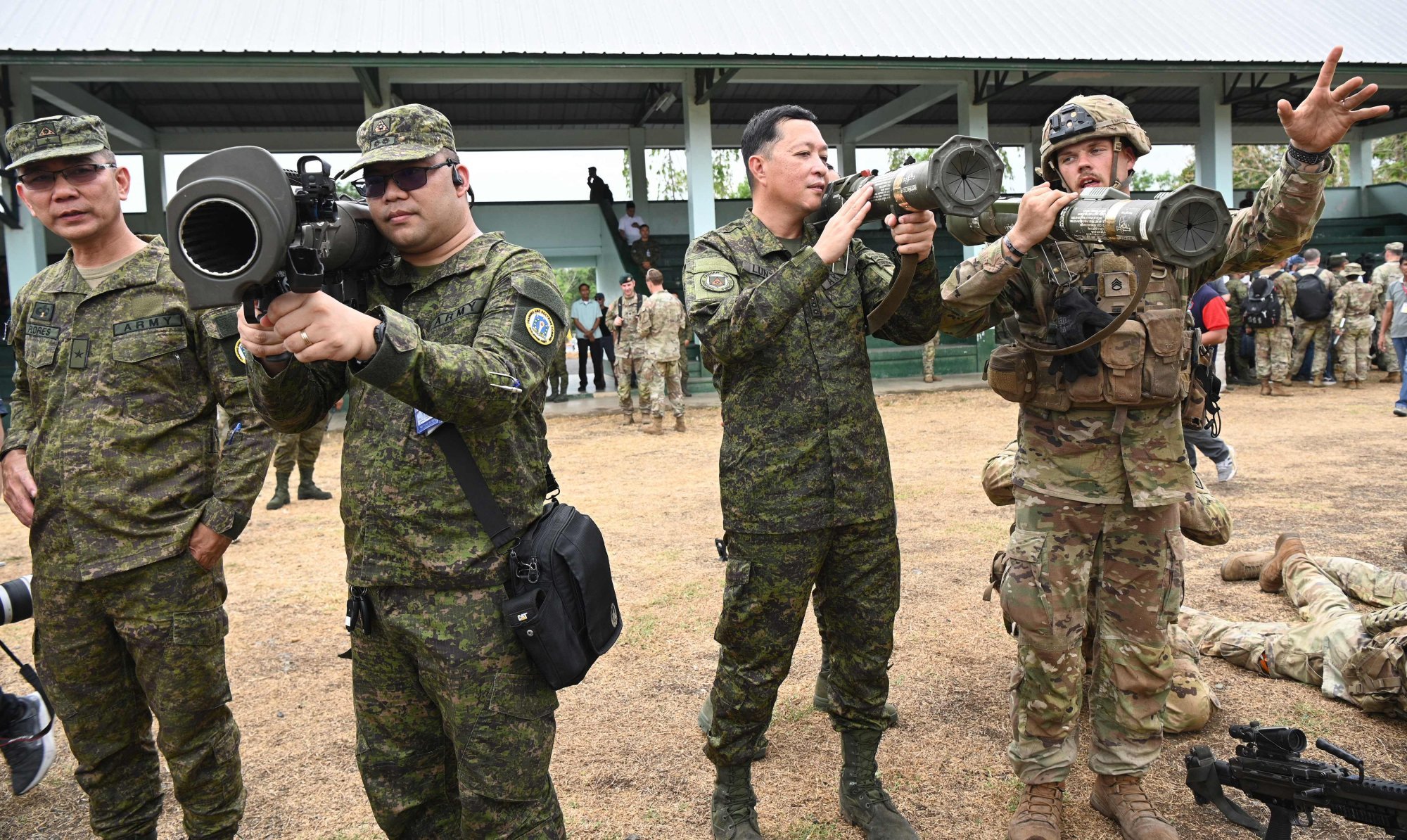
The group or multilateral sail, involving the Philippine, US and French navies, would for the first time take place beyond the 12-nautical-mile maritime territory of the Philippines, he said.
“An intrusion into our exercise area is a possibility, but that will pose more of a problem for the people who want to enter the exercise area, not us,” he added.
As the multilateral group sail would be conducted inside the Philippines’ exclusive economic zone, which is 200 nautical miles from its coastline but beyond the country’s 12-nautical-mile territorial waters, the presence of the foreign navies “could be explained as freedom of navigation operation”, Logico said.
But Logico stressed that the Balikatan exercises were not directed at any foreign country, including China. “With or without China … we would still be doing these exercises. Because these are things that nations do.”
Philippines prepared for ‘worst-case scenario’ as South China Sea tensions rise
Philippines prepared for ‘worst-case scenario’ as South China Sea tensions rise
Logico said the armed forces had a mandate to defend Philippine territory. “And there is an adjunct to that mandate, which is that you have to train for it. And for realistic training, we train in areas where realism is provided for,” he said.
“There’s no sugar-coating this. The purpose of armed forces, why we exist, is really to prepare for war … For us not to prepare, that’s a disservice to the country.”
For this reason, the exercises will include scenarios in which islands are retaken from a foreign enemy.
The exercises will also, for the first time, give “equal importance to both the physical and the non-physical domains” such as cyber defence. The “cyber domain has far-reaching implications into the physical domain, especially the way … our weapons systems fully rely on the cyber domain for [them] to work”, Logico said.
If, for example, “somebody were to mess with your GPS”, certain things would be “beyond difficult” to do.

